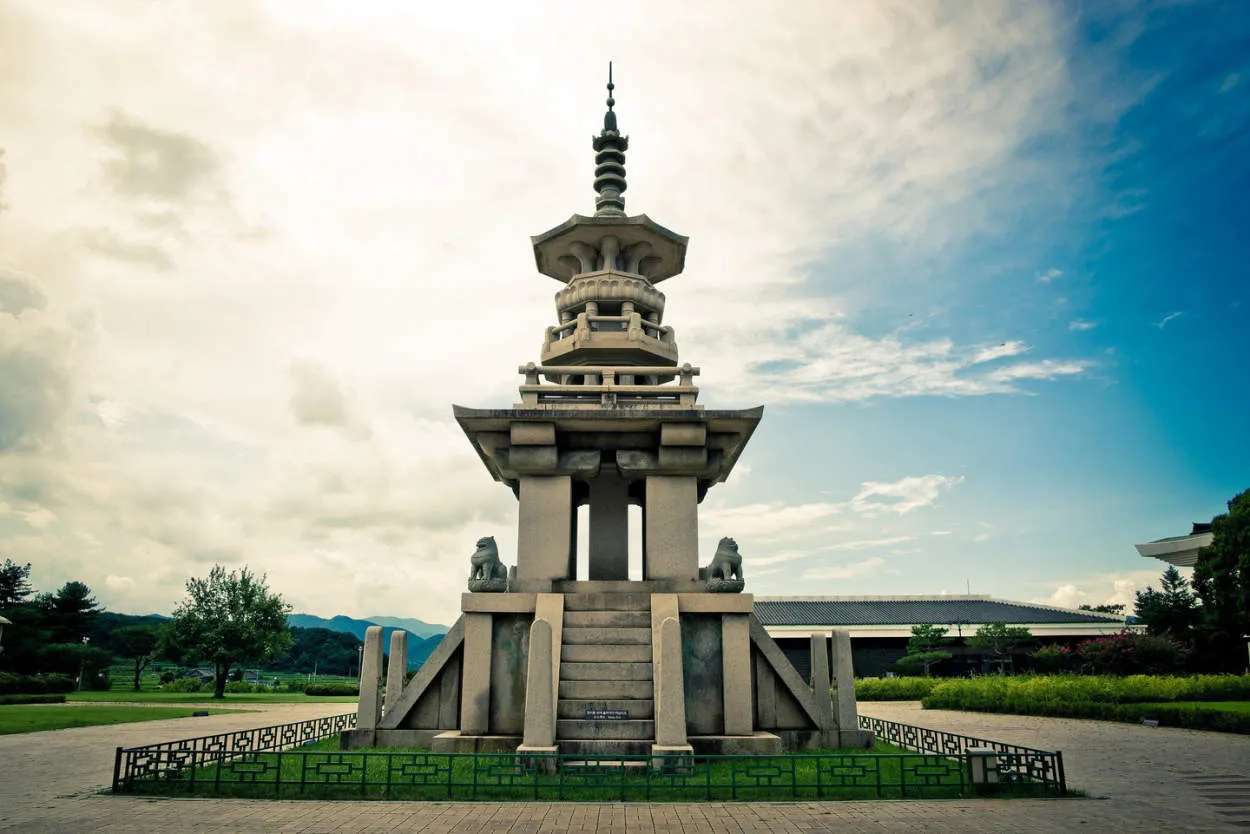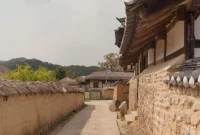Gyeongju, also known as Korea’s Museum Without Walls, is a city steeped in history and culture. With its countless ancient temples, royal tombs, and archaeological sites, Gyeongju offers visitors a fascinating glimpse into Korea’s rich past. Explore the majestic Bulguksa Temple, marvel at the ancient Silla Kingdom artifacts, and immerse yourself in the charm of this open-air museum.
Discovering Gyeongju’s Rich Cultural Heritage
Gyeongju, often referred to as Korea’s “Museum Without Walls,” is a captivating city located in the North Gyeongsang Province. This historic city is renowned for its rich cultural heritage, offering visitors a fascinating glimpse into the ancient kingdom of Silla.
From majestic royal tombs to intricate Buddhist temples, Gyeongju is a treasure trove of historical landmarks. One cannot miss the famous Bulguksa Temple, a UNESCO World Heritage site that showcases the exquisite beauty of ancient Korean architecture.
Gyeongju National Museum is another must-visit destination for history enthusiasts. The museum houses an extensive collection of artifacts that dates back to the Silla Dynasty, including intricate gold crowns, elegant pottery, and centuries-old Buddhist statues.
Exploring Gyeongju’s rich cultural heritage also involves visiting the stunning Anapji Pond. Once a royal pleasure garden, it is now a picturesque park adorned with beautiful flowers and willow trees, providing a tranquil atmosphere for visitors to relax and enjoy the scenery.
The city’s historical sites are best explored by renting a bicycle, allowing for a scenic and convenient way to navigate around Gyeongju. Pedaling through the serene countryside and passing by ancient temples and royal tombs creates a captivating experience that stays in the memory forever.
Gyeongju’s traditional food scene is also not to be missed. Indulge in Silla-era dishes such as “sundae” (blood sausages), “tteokgalbi” (grilled short ribs), and “hwangnam bread” (a local specialty bread), which offer a perfect blend of flavors and cultural heritage.
In conclusion, Gyeongju is a city that beautifully preserves its rich cultural heritage, making it an ideal destination for history buffs and travelers seeking unique experiences. The city’s ancient sites, museums, and mouth-watering cuisine create a perfect harmony between the past and the present, immersing visitors in the captivating world of Silla.
Historical Sites and UNESCO World Heritage
Gyeongju, also known as Korea’s Museum Without Walls, is a city adorned with historical sites and recognized as a UNESCO World Heritage site. Located in South Korea’s North Gyeongsang province, Gyeongju is a treasure trove of ancient relics and cultural remnants that transport visitors back in time.
One of the must-visit sites in Gyeongju is the Bulguksa Temple. Designed during the Silla Kingdom, this temple is a masterpiece of Buddhist art and architecture. Its intricate carvings and stunning pagodas showcase the craftsmanship of ancient Korean artisans.
Another notable attraction is the Seokguram Grotto, a granite cave temple that houses a magnificent statue of Buddha. Visitors can admire the delicate features and serene expression of the statue while enjoying breathtaking views of the surrounding mountains and sea.
Gyeongju’s historical significance is further demonstrated at the Gyeongju National Museum. This museum showcases the region’s rich history through a vast collection of artifacts, including pottery, jewelry, and royal treasures from the Silla Dynasty.
For those interested in royal tombs, Gyeongju offers the Daereungwon Tomb Complex. This vast burial ground features large grassy mounds that house the remains of ancient kings and nobles. Exploring the complex gives visitors a glimpse into the royal customs and rituals of the Silla Kingdom.
Exploring Gyeongju is like stepping into a living history book. The city’s numerous historical sites and UNESCO World Heritage status make it a dream destination for history buffs and culture enthusiasts.
Traditional Arts and Crafts of Gyeongju
Gyeongju, often referred to as Korea’s Museum Without Walls, is a city rich in history and culture. One aspect that highlights the heritage of this ancient city is its traditional arts and crafts. These traditional practices have been passed down through generations and continue to thrive in Gyeongju.
1. Silla Pottery
Silla Pottery is a renowned craft in Gyeongju, known for its intricate designs and delicate craftsmanship. This pottery style dates back to the Silla Dynasty (57 BC – 935 AD) and is characterized by its unique glazing techniques and elegant shapes. Visitors can explore the pottery workshops and witness the process of creating these beautiful ceramics.
2. Hanbok Making
The hanbok, traditional Korean attire, holds great significance in Gyeongju. Visitors have the opportunity to experience hanbok making, where they can learn about the history, symbolism, and techniques behind this traditional costume. From selecting the fabric to stitching and embroidery, participants can immerse themselves in the art of creating a hanbok.
3. Traditional Lacquerware
Gyeongju is famous for its traditional lacquerware, which showcases intricate craftsmanship and vibrant colors. This delicate art form involves coating wooden objects with multiple layers of lacquer, followed by meticulous carving and decoration. The result is stunning lacquerware pieces, including bowls, boxes, and ornaments.
4. Goryeo Celadon
An exquisite ceramic style, Goryeo Celadon, has its roots in Gyeongju. This ancient craft dates back to the Goryeo Dynasty (918-1392) and is characterized by its jade-green glaze and often intricate inlaid designs. Gyeongju offers opportunities for visitors to witness the making of Goryeo Celadon and appreciate its timeless beauty.
5. Traditional Paper Craft
Traditional paper crafts, such as hanji (Korean paper) making and paper folding, are also prominent in Gyeongju. Hanji, made from the bark of the mulberry tree, is known for its strength and durability. Visitors can participate in workshops to learn about the traditional methods of creating hanji and explore various paper craft techniques.
Conclusion
Gyeongju truly lives up to its reputation as Korea’s Museum Without Walls. With its rich historical and cultural heritage, stunning attractions, and well-preserved artifacts, the city offers visitors a unique and immersive experience. Exploring the ancient tombs, temples, and ruins, one can feel the deep sense of history and appreciate the profound beauty of Gyeongju. It is a must-visit destination for those seeking to dive into Korea’s rich past and discover its hidden treasures.




